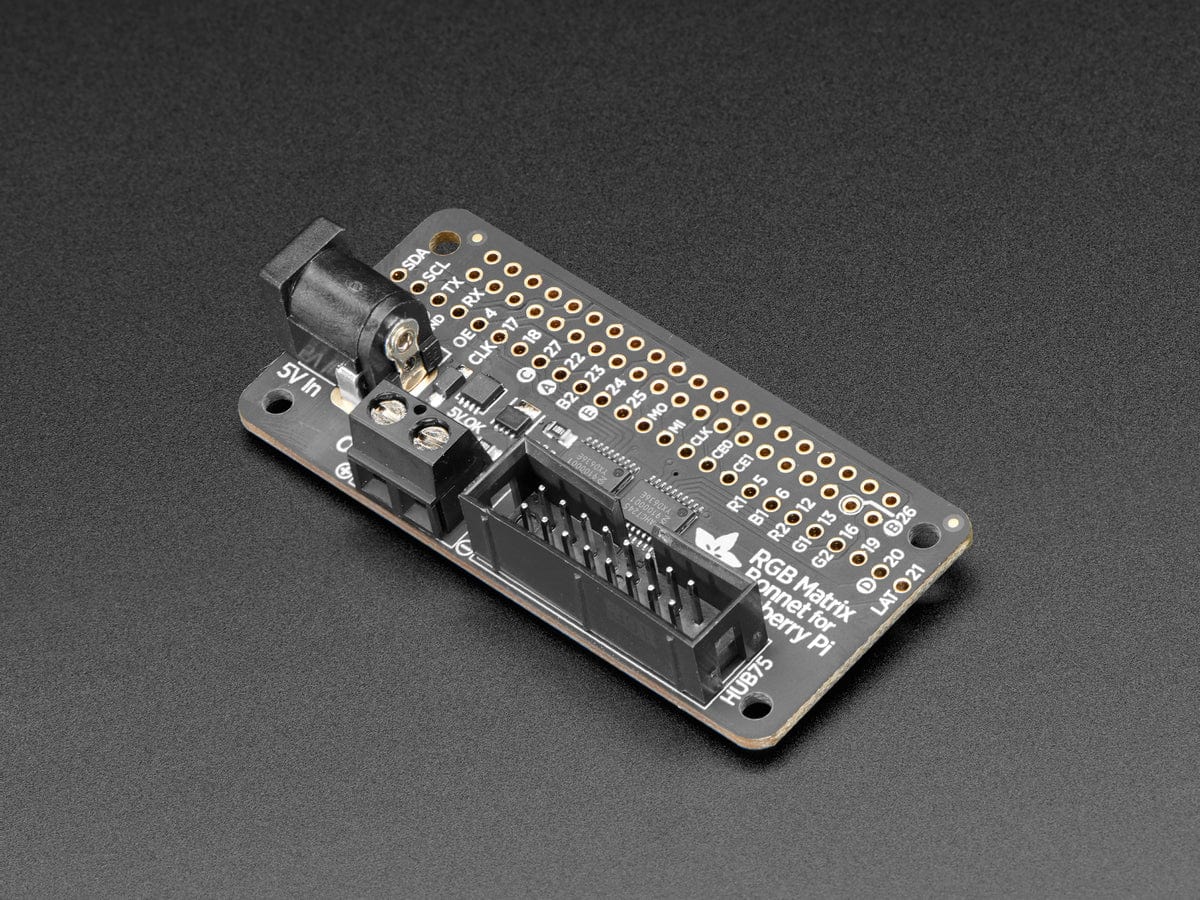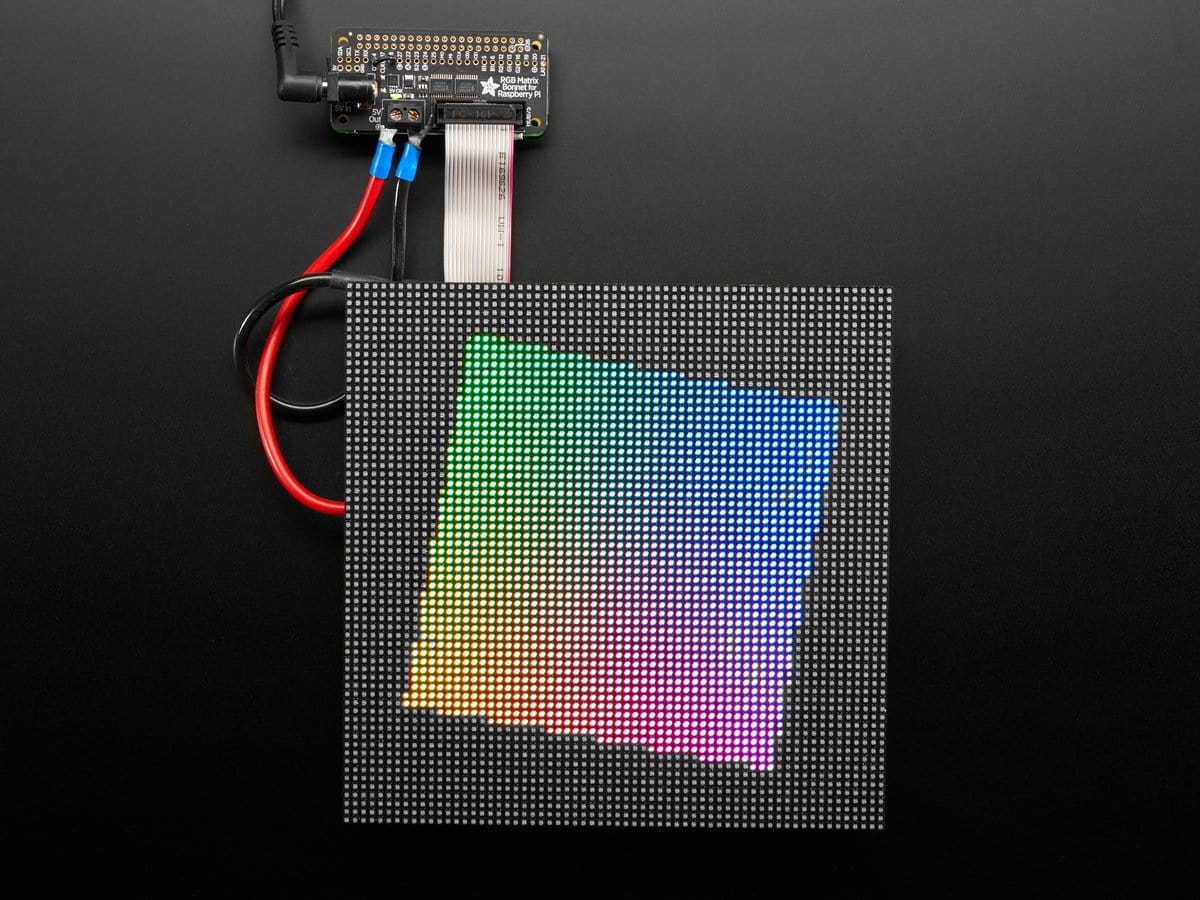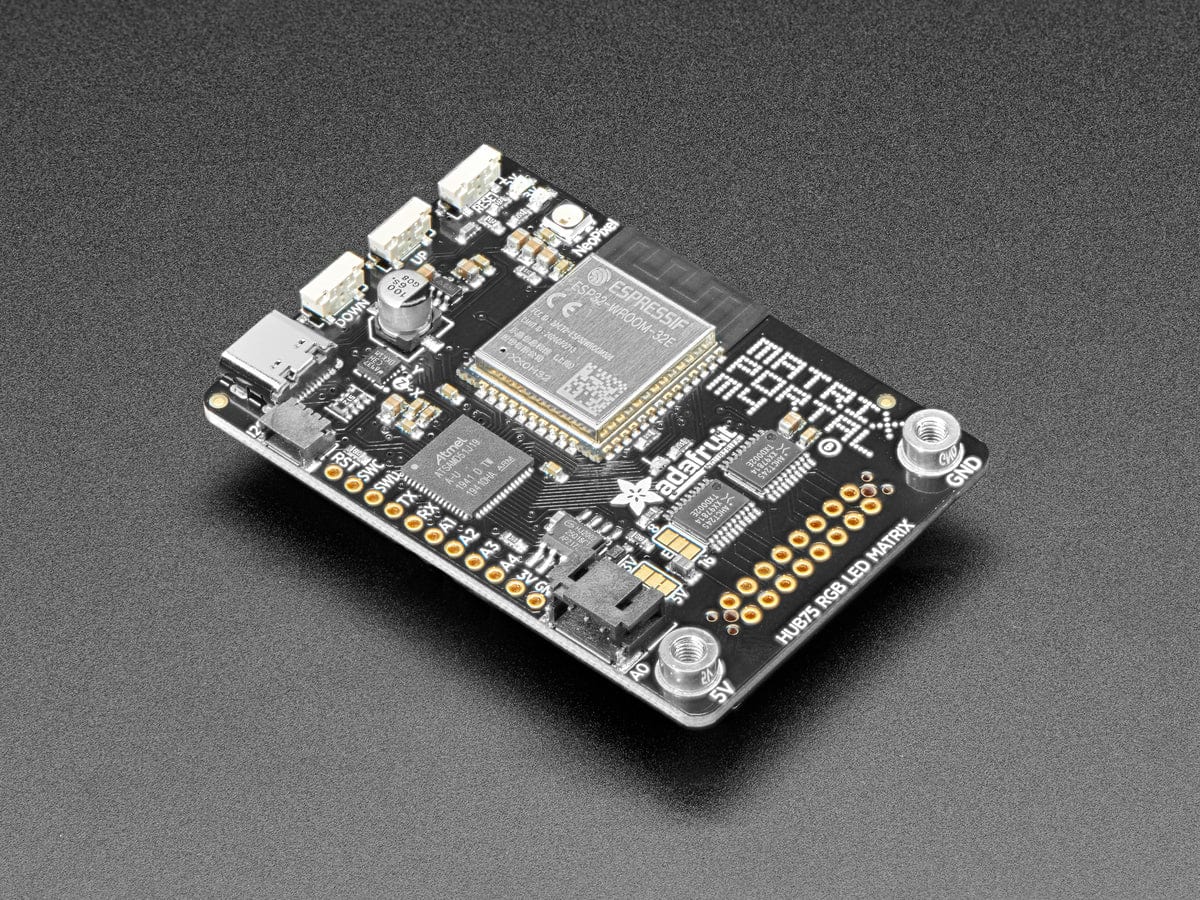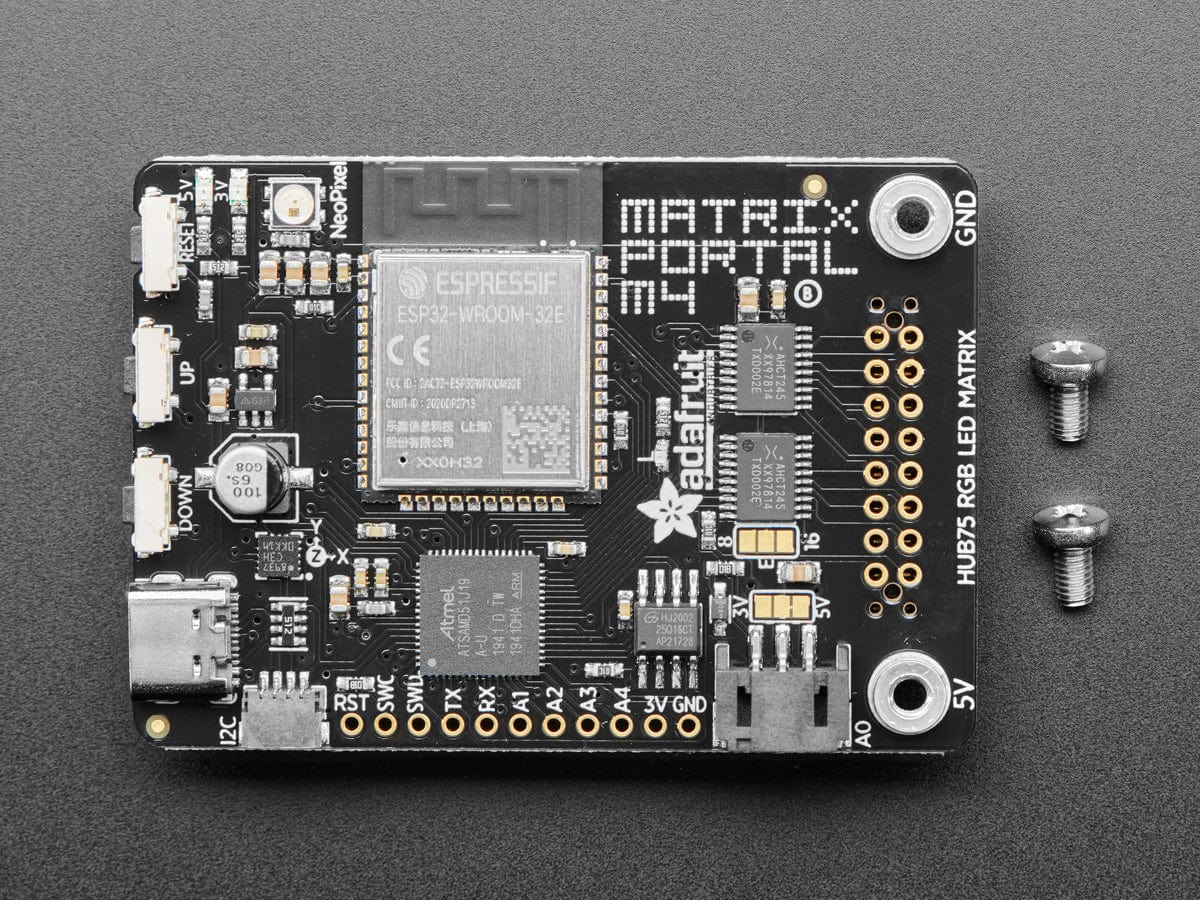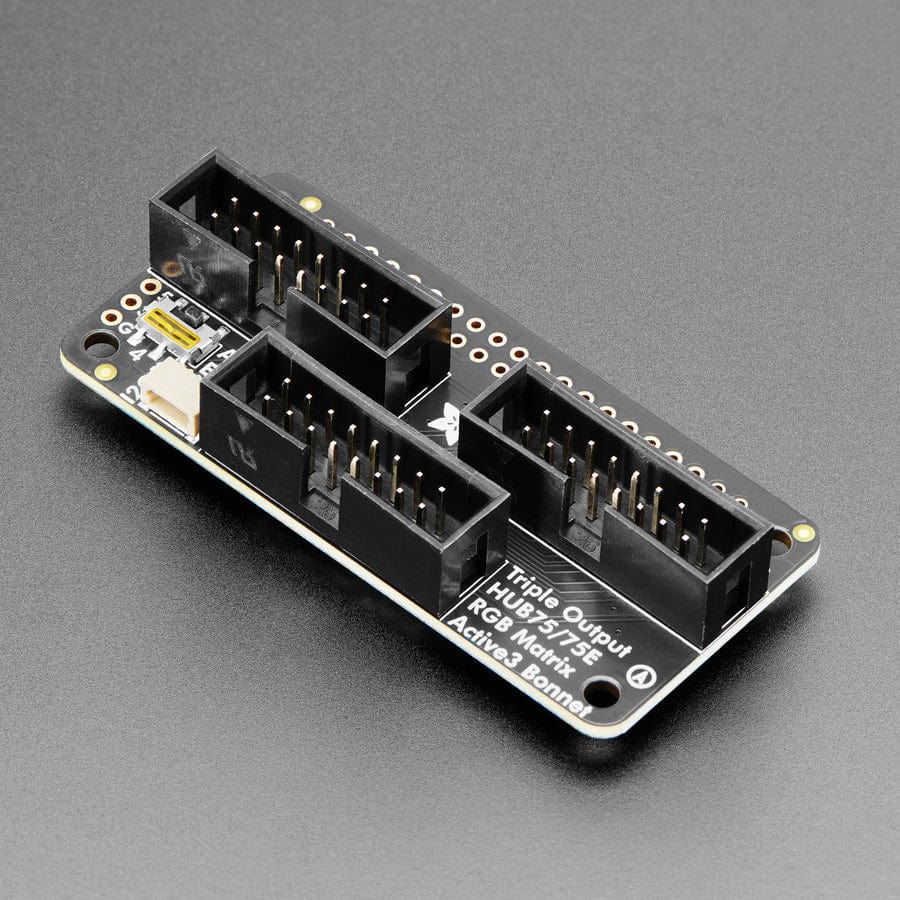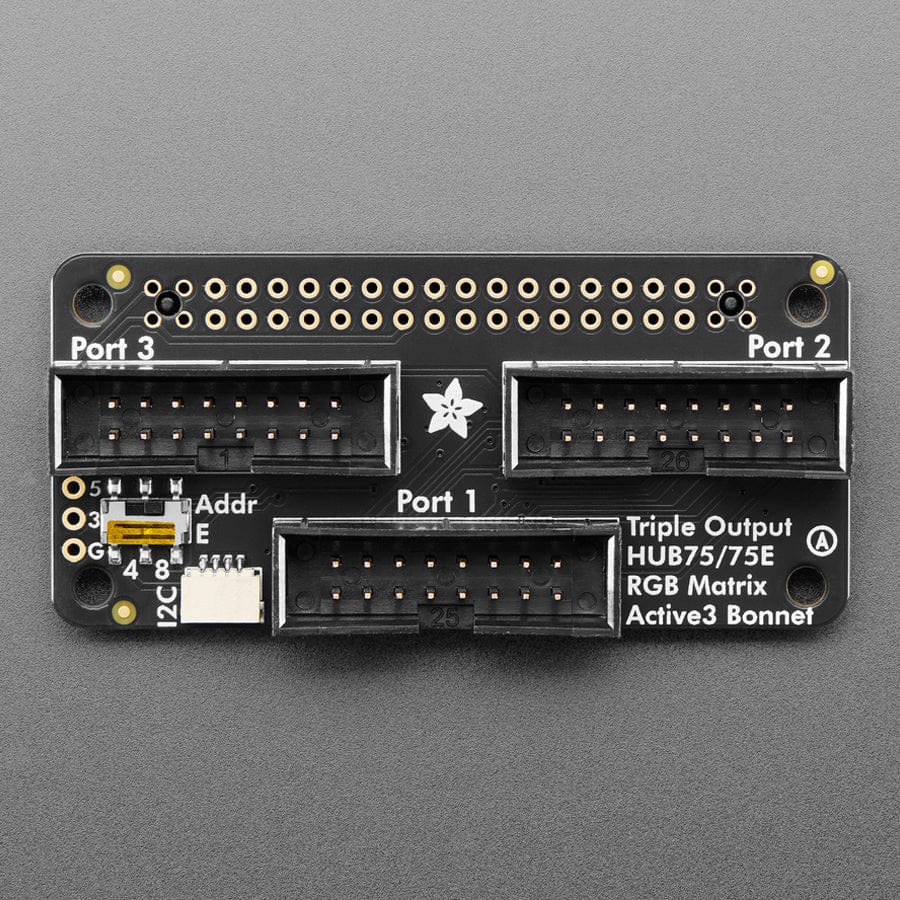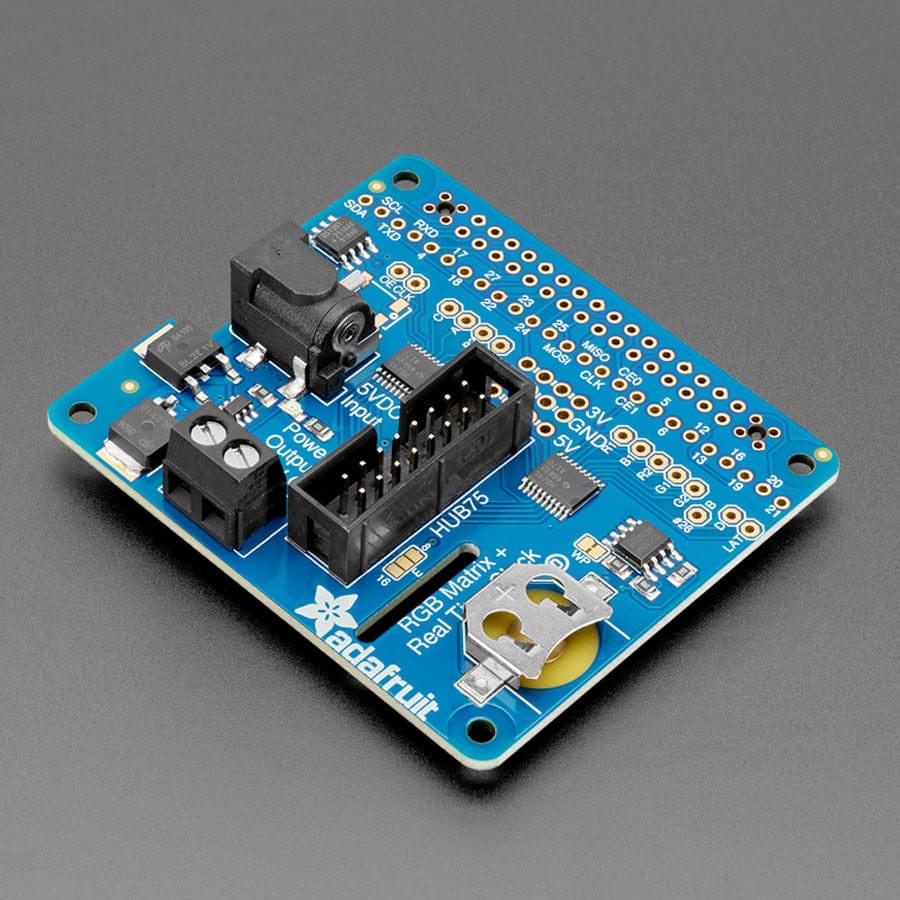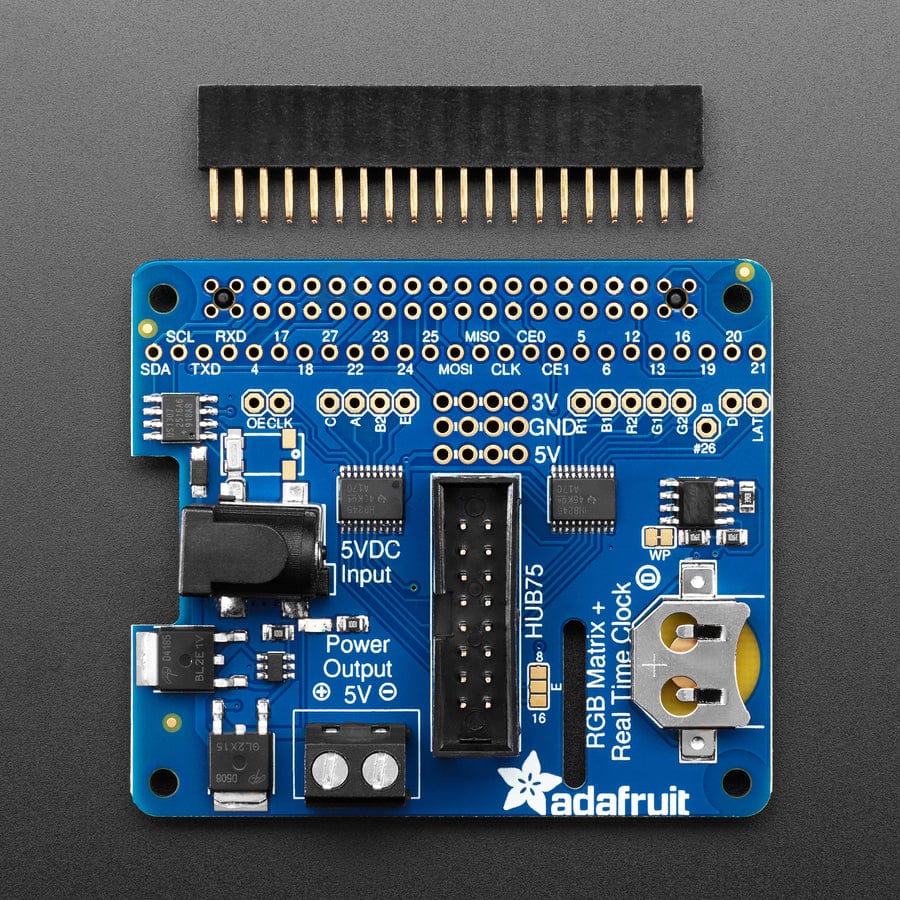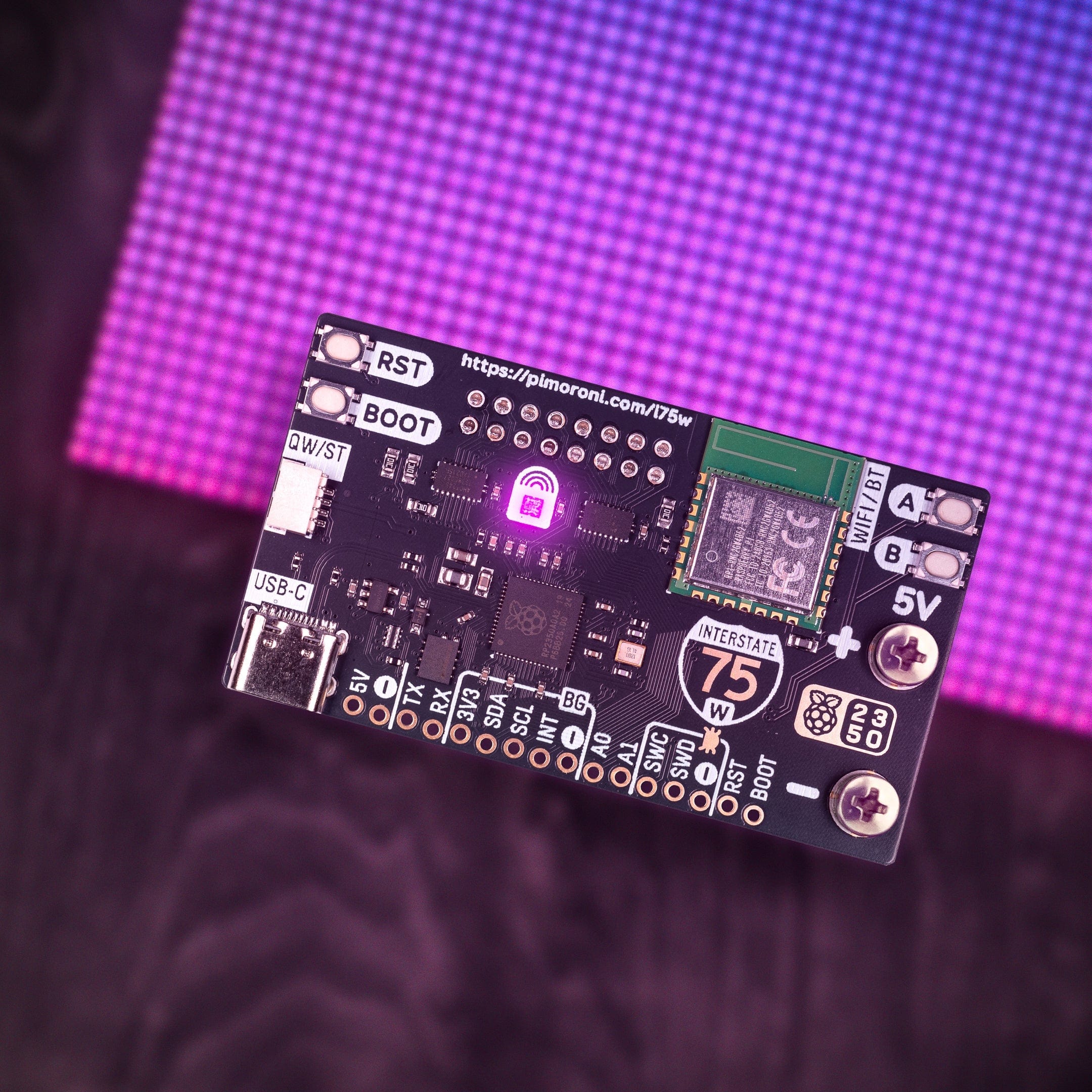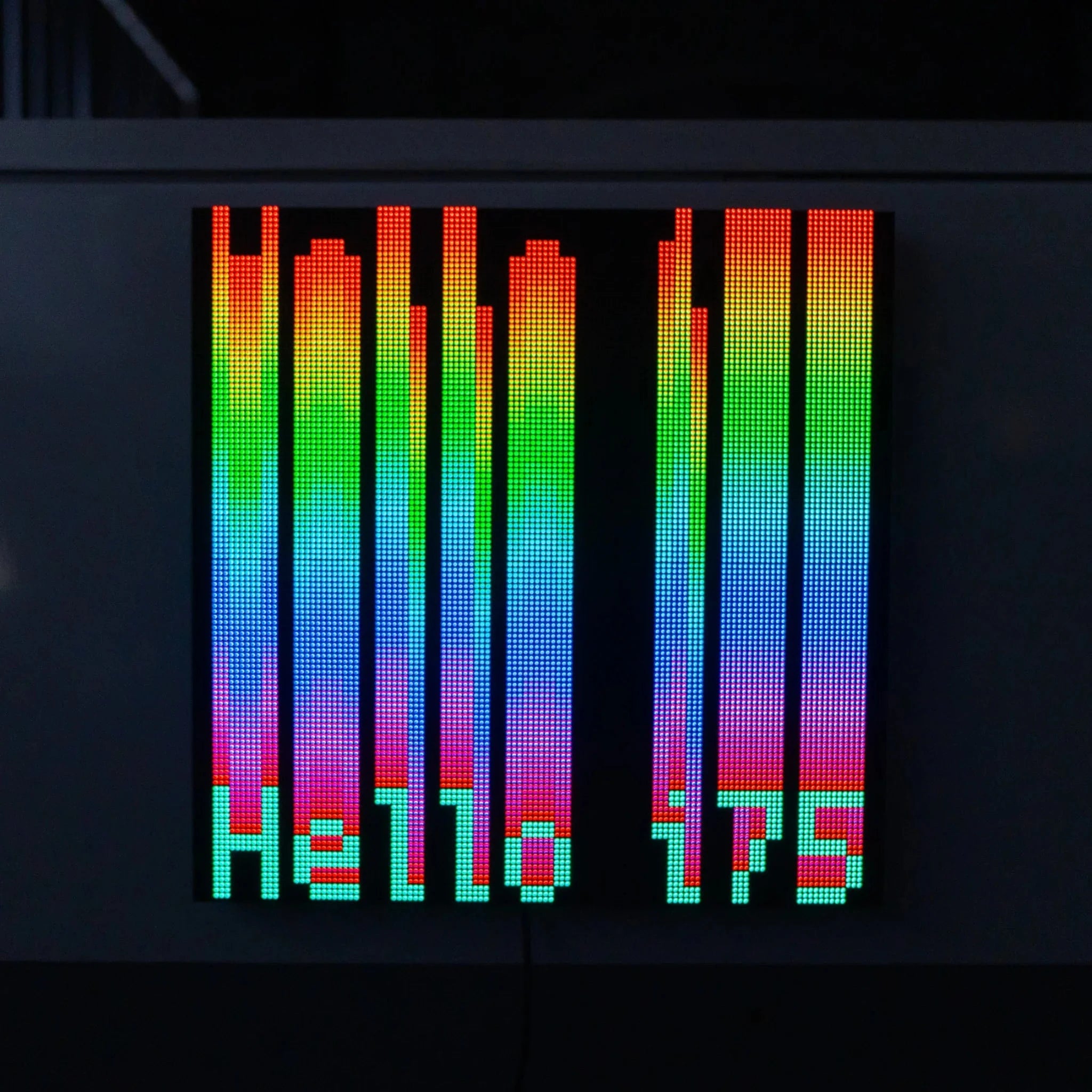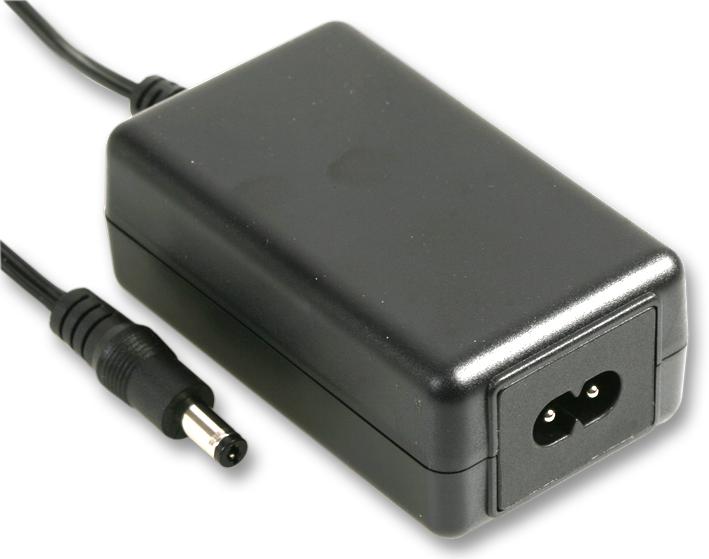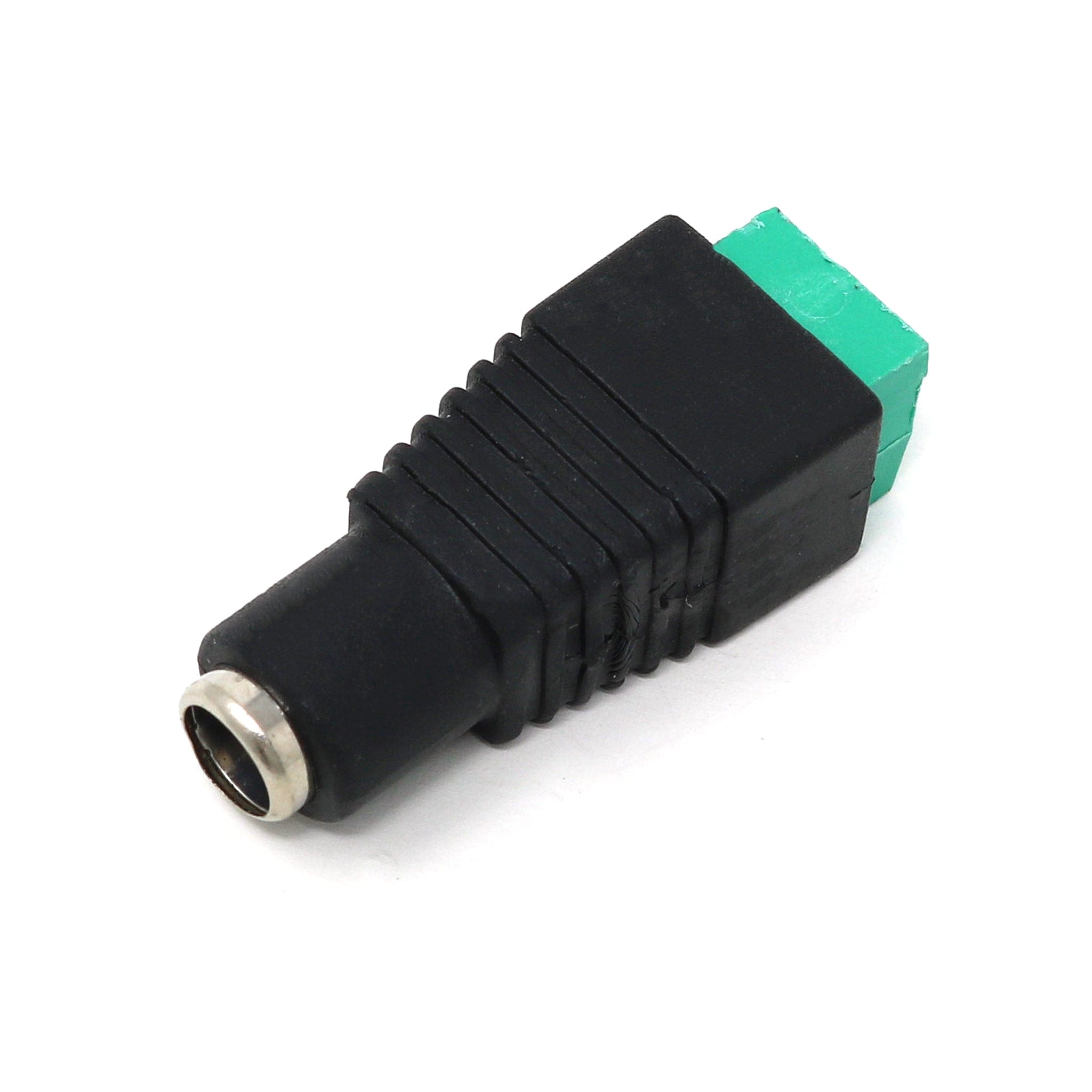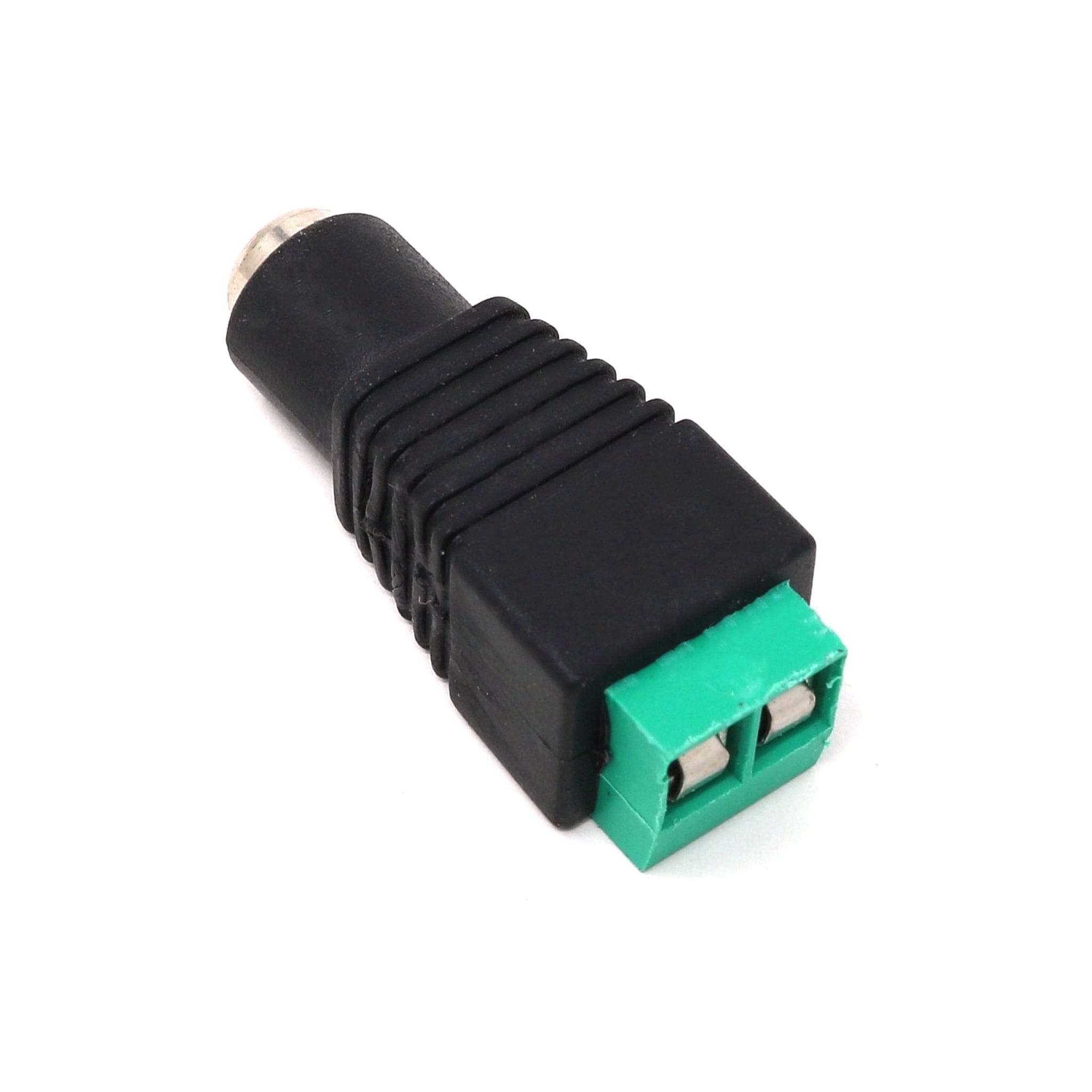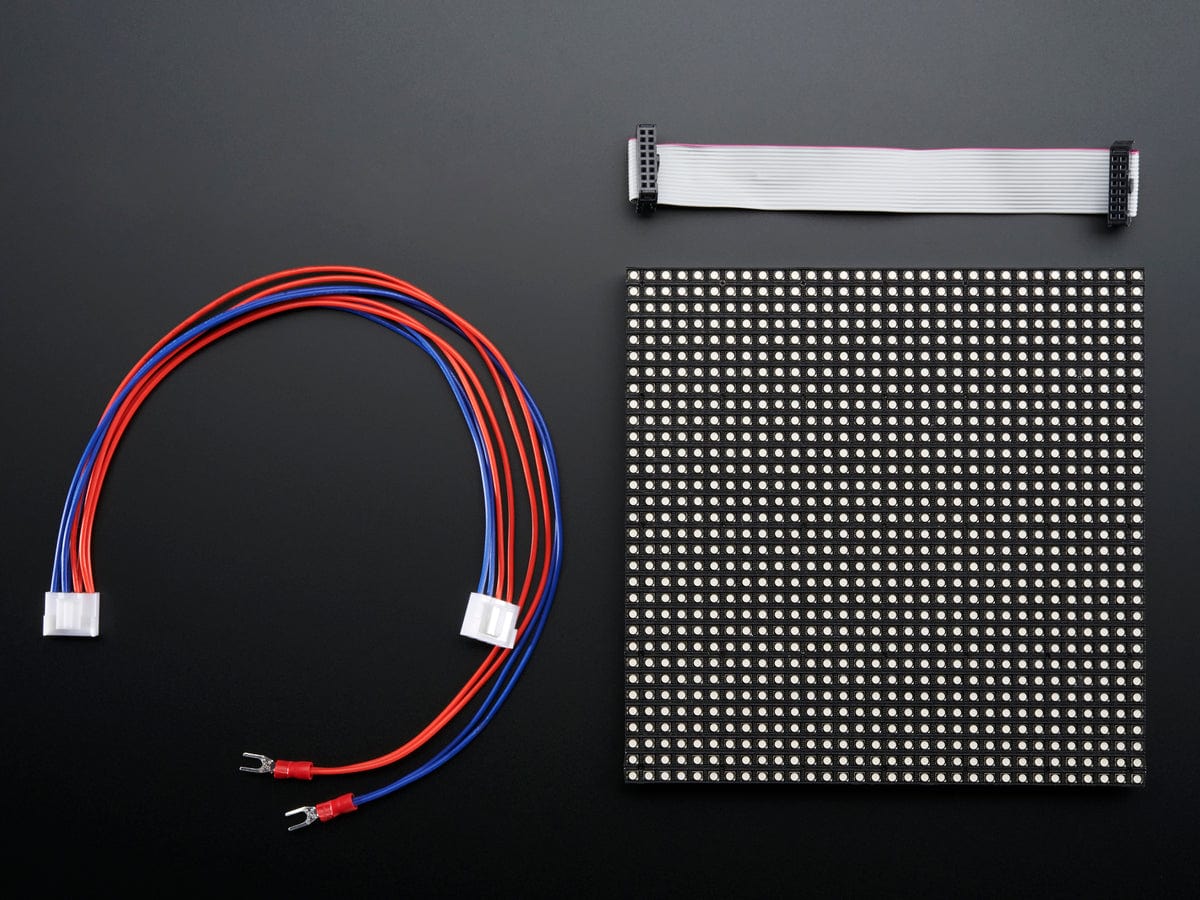
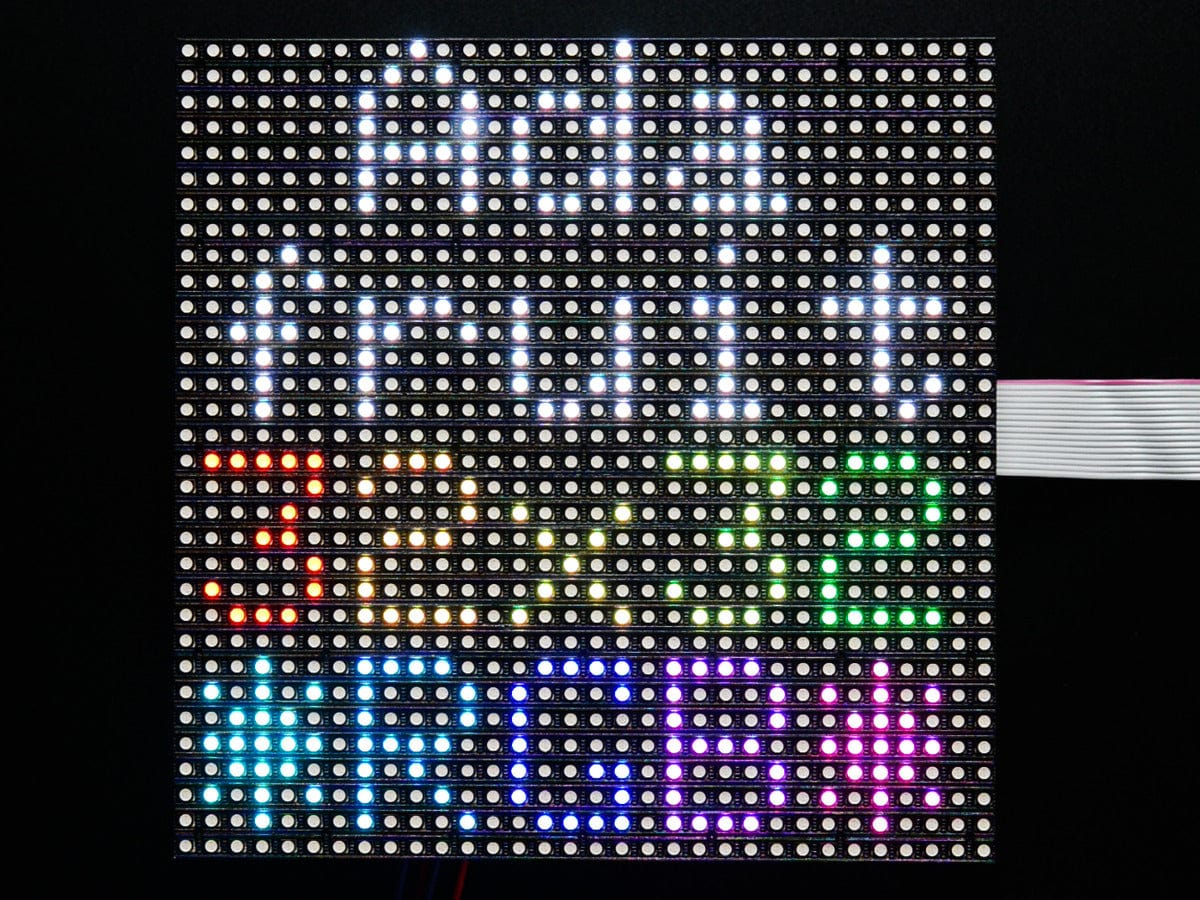
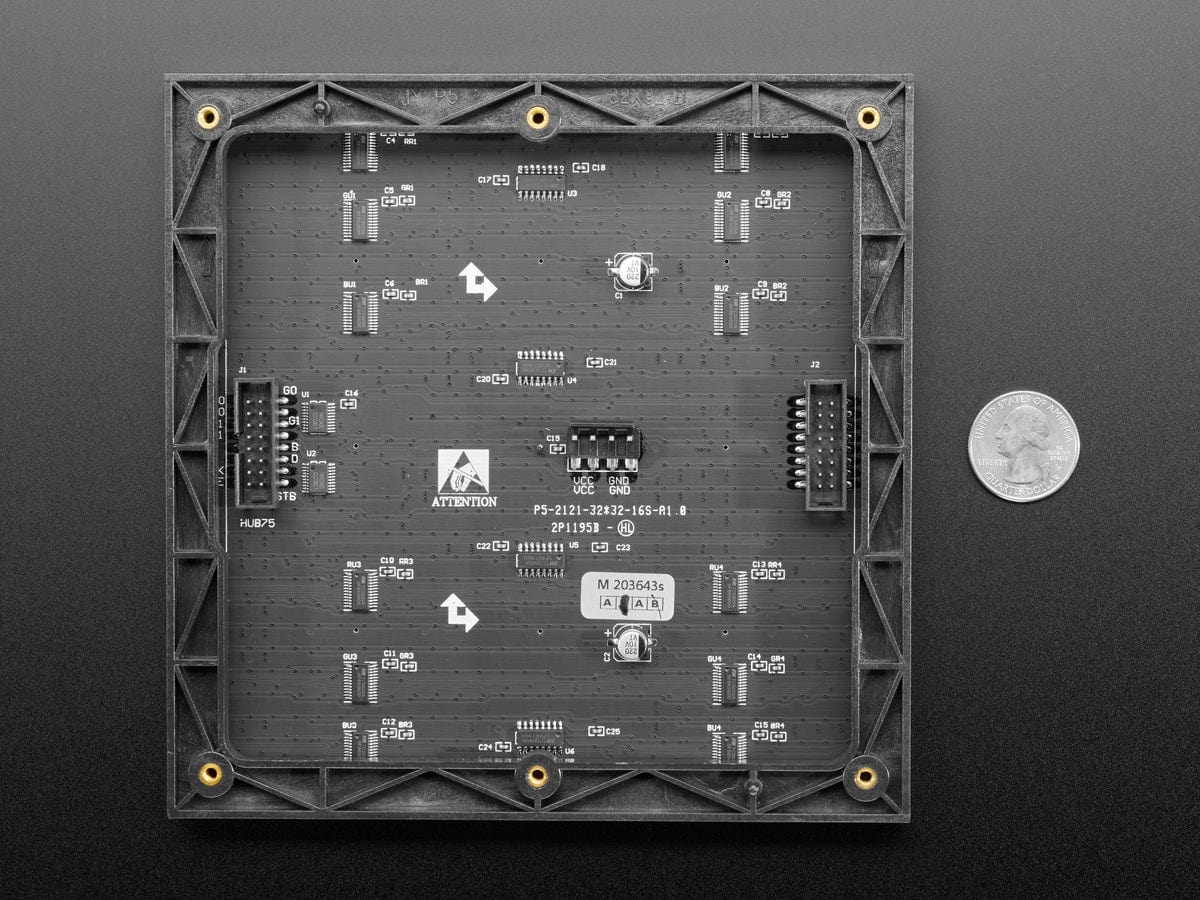
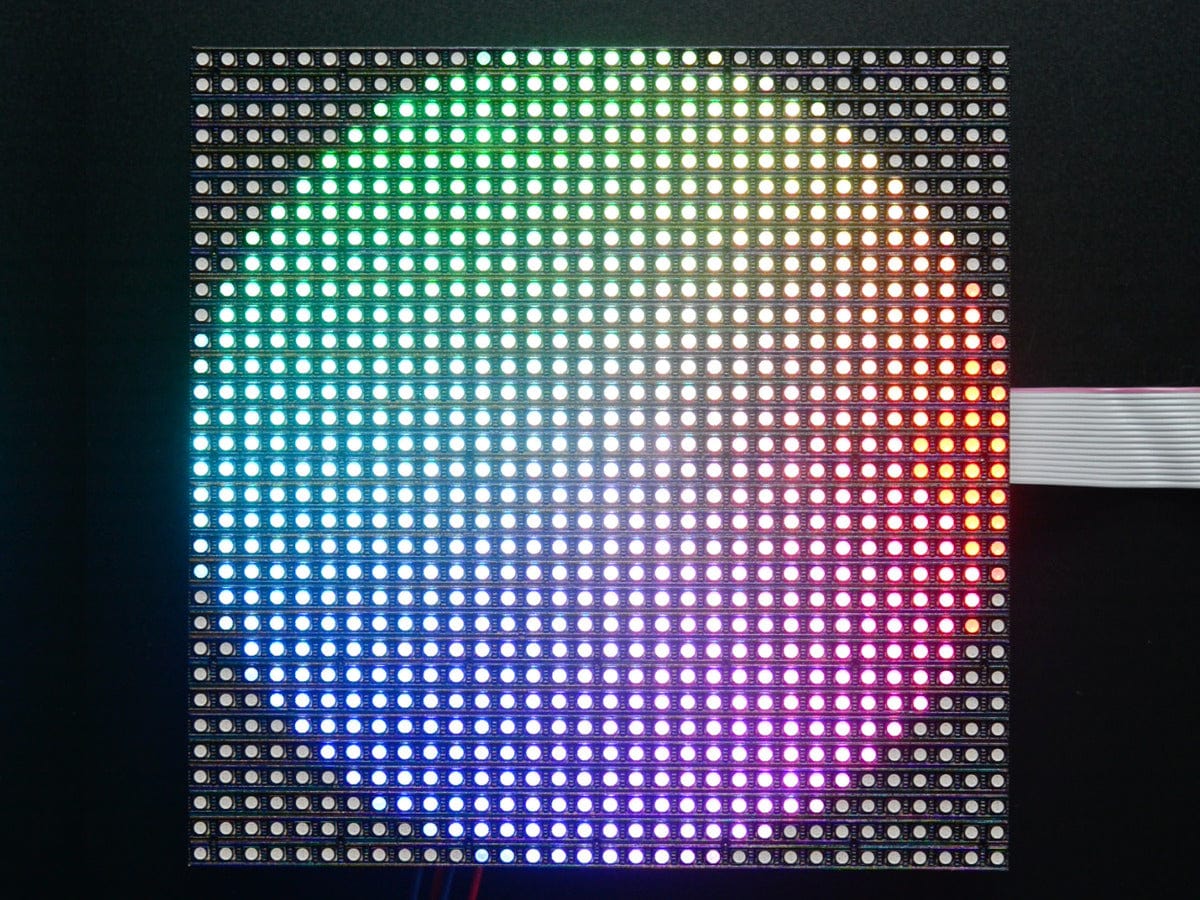
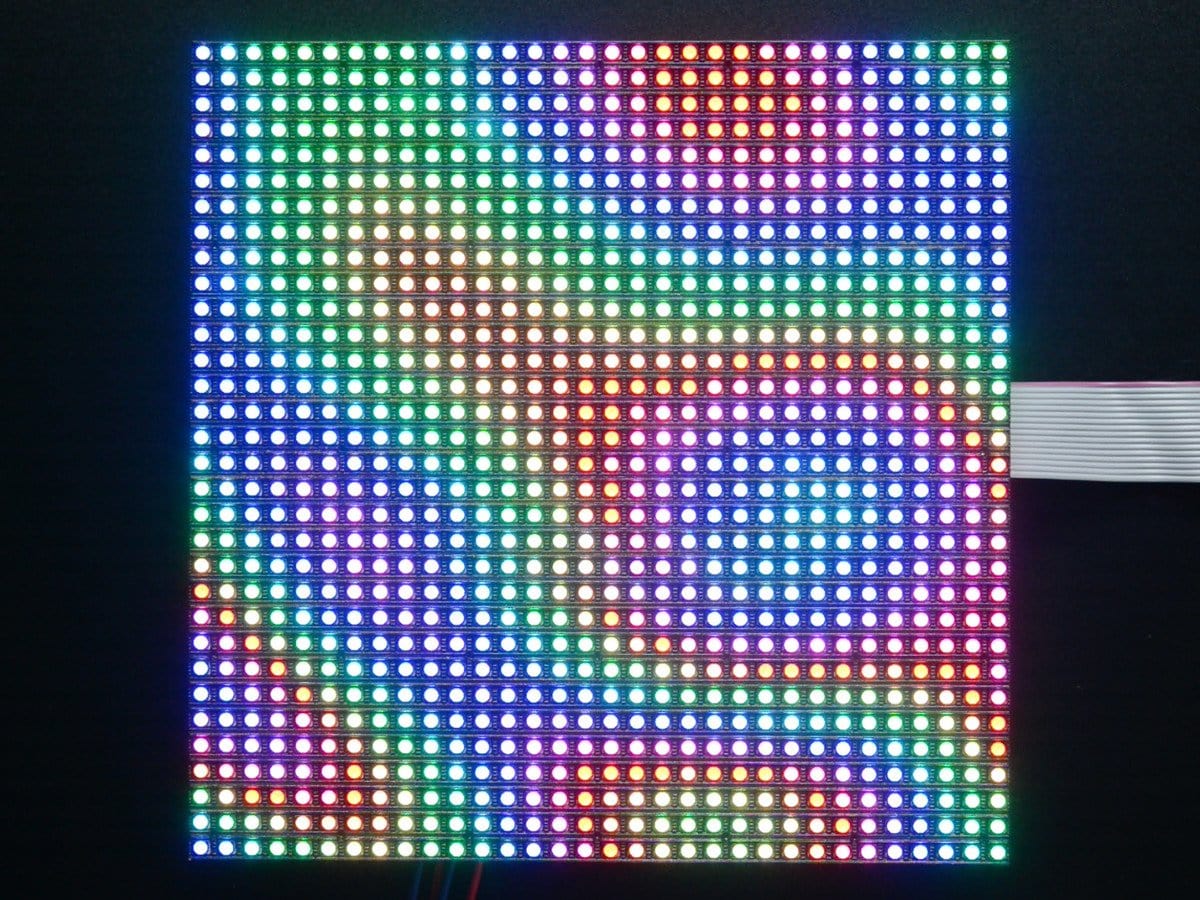
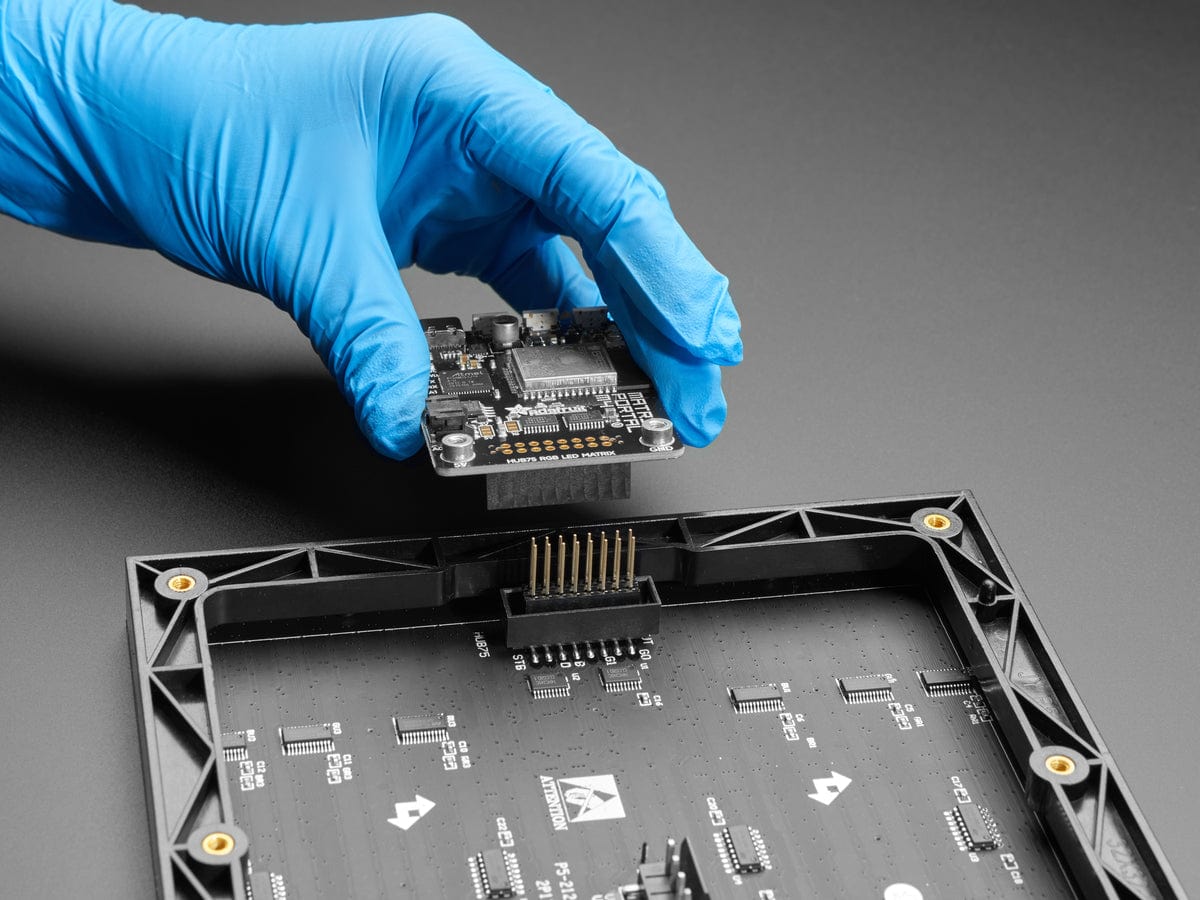
Login / Signup
Cart
Your cart is empty






Bring a little bit of Times Square into your home with this sweet 32 x 32 square RGB LED matrix panel. These panels are normally used to make video walls, here in New York we see them on the sides of busses and bus stops, to display animations or short video clips. We thought they looked really cool so we picked up a few boxes of them from a factory.
These are a lot like our 6mm Grid 32x32 RGB LED matrix panel, but The LEDs on this panel are also a little closer together (a 5mm grid) so you won’t have to stand as far away to appreciate it. They are made to look good indoors, even with a wide-angle view (160 degrees) and look great in ambient light.
These matrices have 1024 bright RGB LEDs arranged in a 32x32 grid on the front. On the back there is a PCB with two IDC connectors (one input, one output: in theory you can chain these together) and 12 16-bit latches that allow you to drive the display with a 1:16 scan rate.
These panels require 13 digital pins (6 bit data, 7 bit control) and a good 5V supply, up to 4A per panel. We suggest our 4A regulated 5V adapter and then connecting a 2.1mm jack. Please check out our tutorial for more details!
Comes with:
Keep in mind that these displays are designed to be driven by FPGAs or other high speed processors: they do not have built in PWM control of any kind. Instead, you're supposed to redraw the screen over and over to 'manually' PWM the whole thing. This display does best with a high speed, high RAM microcontroller like a SAMD21, SAMD51, ESP32, etc. The good news is that the display is pre-white balanced with nice uniformity so if you turn on all the LEDs it's not a particularly tinted white.
Of course, we wouldn't leave you with a datasheet and a "good luck!" We have full wiring diagrams and working Arduino library code with examples from drawing pixels, lines, rectangles, circles, and text. You'll get your color blasting within the hour! You'll need 13 digital pins, and about 1600 bytes of RAM to buffer the 12-bit color image. You cannot use this size panel with an Arduino UNO (ATmega328) or ATmega32u4 - you need a chip with more RAM!
These displays are technically 'chainable' - connect one output to the next input - as long as you have the RAM to handle it
Note: In order to use a MatrixPortal with this matrix, you'll need a pack of our Stacking Headers to boost the MatrixPortal above the frame of the matrix. Stick two of the 8-pin headers into the matrix's 8x8 box header before placing the MatrixPortal.
As of August 11, 2020 - We no longer include Magnetic Feet with this product







